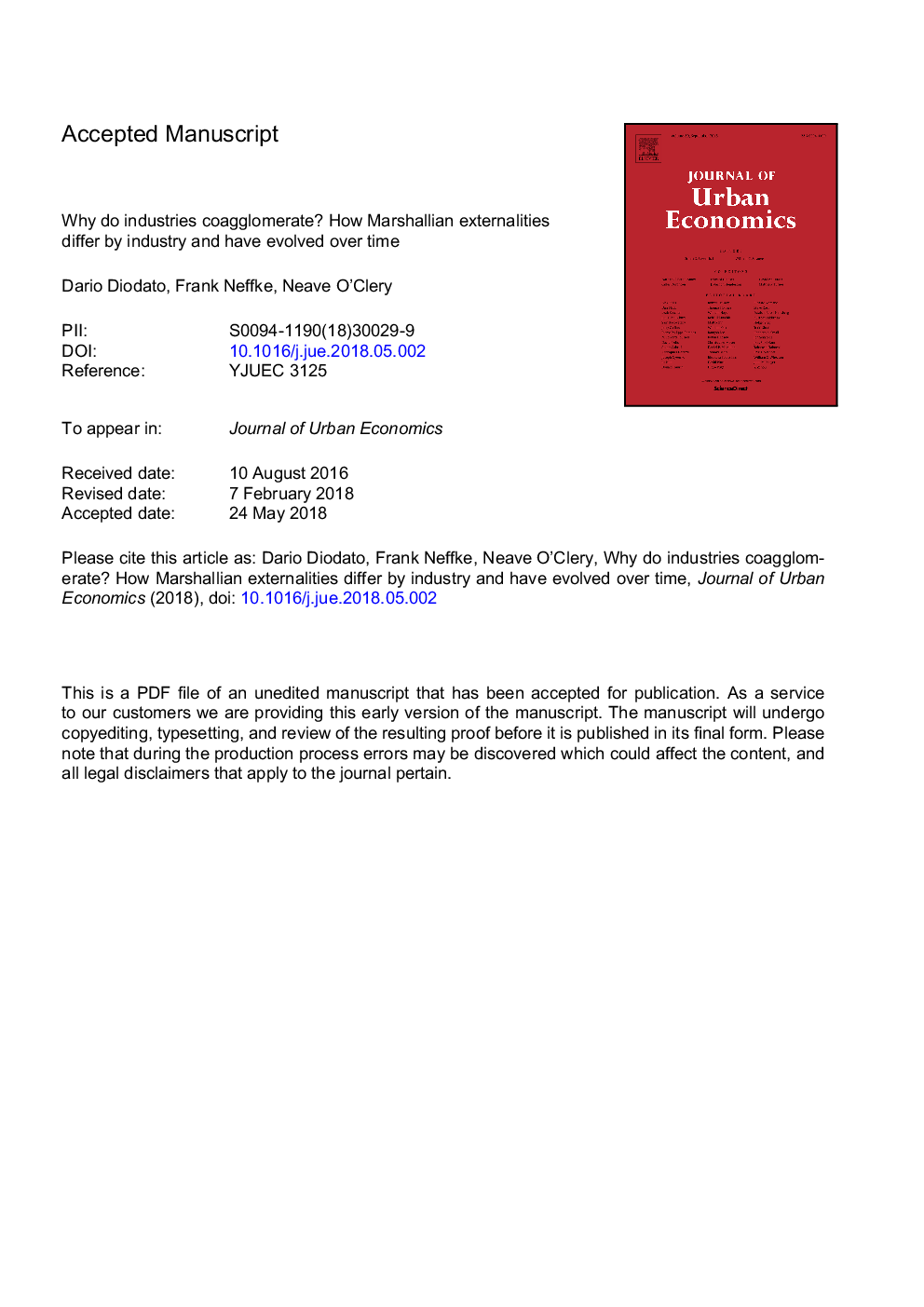| Article ID | Journal | Published Year | Pages | File Type |
|---|---|---|---|---|
| 9953056 | Journal of Urban Economics | 2018 | 55 Pages |
Abstract
The fact that firms benefit from close proximity to other firms with which they can exchange inputs, skilled labor or know-how helps explain why many industrial clusters are so successful. Studying the evolution of coagglomeration patterns, we show that the type of agglomeration that benefits firms has drastically changed over the course of a century and differs markedly across industries. Whereas, at the beginning of the twentieth century, industries tended to colocate with their value chain partners, in more recent decades the importance of this channel has declined and colocation seems to be driven more by similarities in industries' skill requirements. By calculating industry-specific Marshallian agglomeration forces, we are able to show that, today, skill-sharing is the most salient motive behind the location choices of services, whereas value chain linkages still explain much of the colocation patterns in manufacturing. Moreover, the estimated degrees to which labor and input-output linkages are reflected in an industry's coagglomeration patterns help improve predictions of city-industry employment growth.
Related Topics
Social Sciences and Humanities
Economics, Econometrics and Finance
Economics and Econometrics
Authors
Dario Diodato, Frank Neffke, Neave O'Clery,
